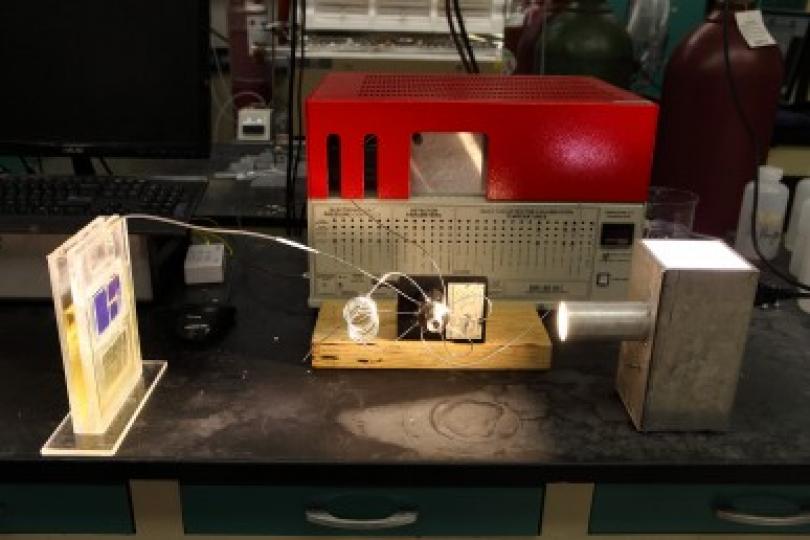That’s what photosynthesis does in leaves – creates fuel in the form of plant sugars that flow into the plant to which the leaf is attached. One of the main quibbles about trying to convert solar energy to usable fuel is the usual multi-step process involved. Researchers at the University of Illinois at Chicago have made a major advance in creating a solar cell that captures carbon dioxide (CO2) and uses sunlight to make a synthetic gas that can be burned as fuel. Scientists rarely use hyperbolic terms such as “extraordinary” in their findings. According to Amin Salehi-Khojin, assistant professor of mechanical and industrial engineering at UIC, “What we needed was a new family of chemicals with extraordinary properties.” They may have found that family, but their discovery is buried in the less grandiose phrasing of their paper’s abstract in the July 29 issue of Science. “Small and salty CO2 reduction scheme” That might sound like part of the secret …
Solar Cells and Artificial Photosynthesis Make Hydrogen Directly
Science 2.0.com reports on an exciting potential breakthrough in solar energy and its direct transformation into hydrogen fuel. Usually, solar cells generate current from photons, making electricity which can run things or be stored in batteries. This new and different approach, using an innovative and inexpensive solar cell and a metal oxide photo anode, can store nearly five percent of solar energy chemically as hydrogen. The metal oxide bismuth vanadate (BiVO4) photo anode includes a small dose of tungsten atoms, was then sprayed onto conducting glass and “coated with an inexpensive cobalt phosphate catalyst,” which helped speed up oxygen formation during water splitting. Science 2.0 reports Professor Dr. Roel van de Krol’s remarks. He’s head of the Helmholtz Zentrum Berlin Institute for Solar Fuels, and worked with researchers there and at Deflt University. “Basically, we combined the best of both worlds. We start with a chemically stable, low cost metal oxide, add a really good but sim ple silicon-based thin …
Soy Beans – Not Just for Tofu Anymore
Shilpa and twin sister Shweta Iyer have been working on splitting water to extract hydrogen for many years. In November, 2012 the Port Jefferson Station high school students won regional finalist honors in the Siemens Competition in Math, Science & Technology, and netted $1,000 each. They were awarded the Grand Prize in the Long Island Science and Engineering Fair in March, and were sent to Phoenix, Arizona in May to compete in the Intel International Science and Engineering Fair, where they won fourth place and $500 each. Their winnings go into college funds which they will invest in the fall. What has won these young women international recognition? Perhaps it’s their work in creating a catalyst for the production of hydrogen – from literally dirt cheap material that advisor James Muckerman credits with being, “the best performing, non-noble-metal-containing hydrogen evolution catalyst yet known – and even better than bulk platinum metal.” The young women entered the U. S. Department of …

